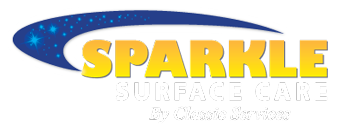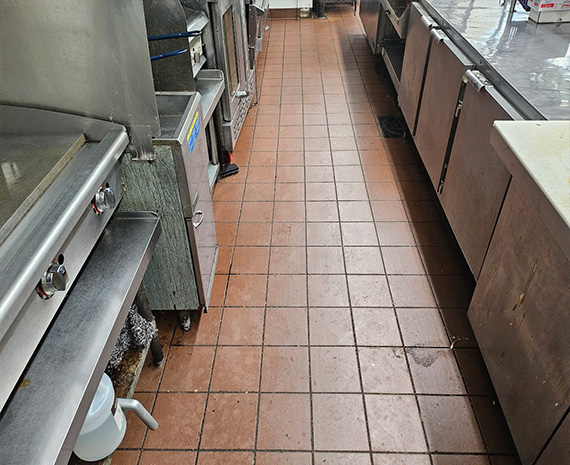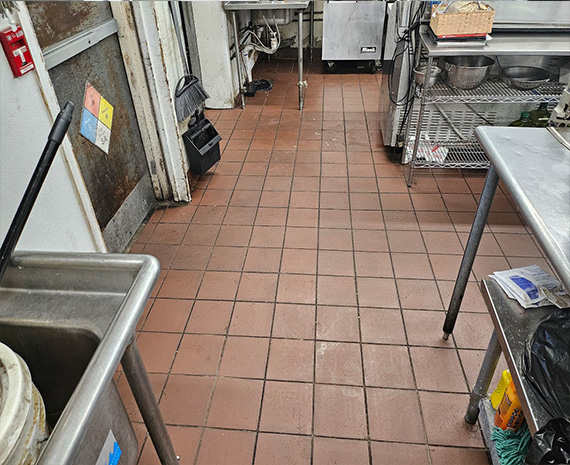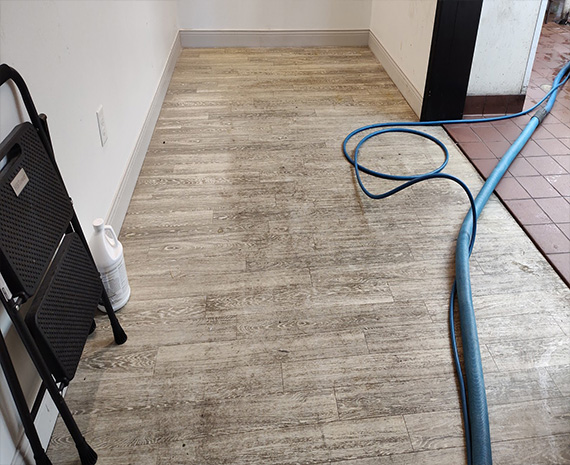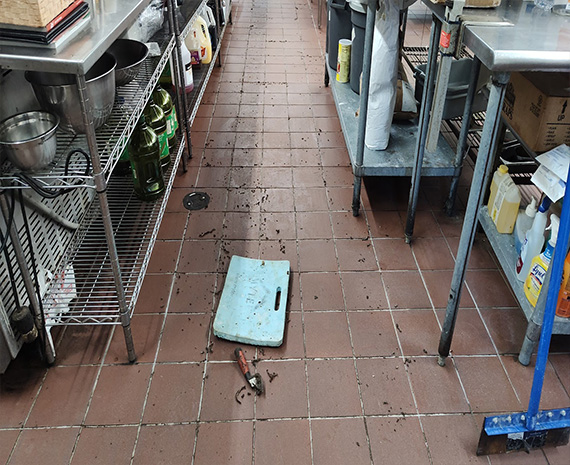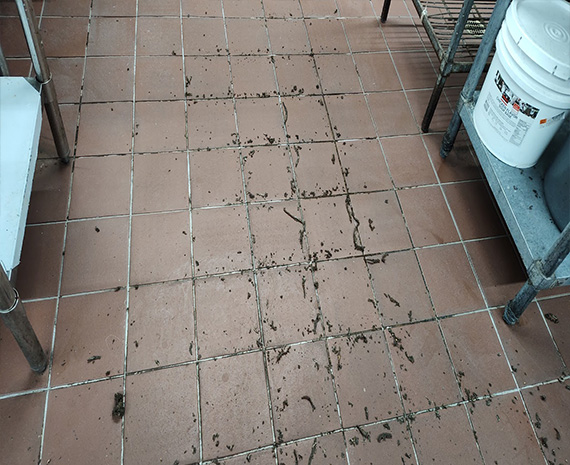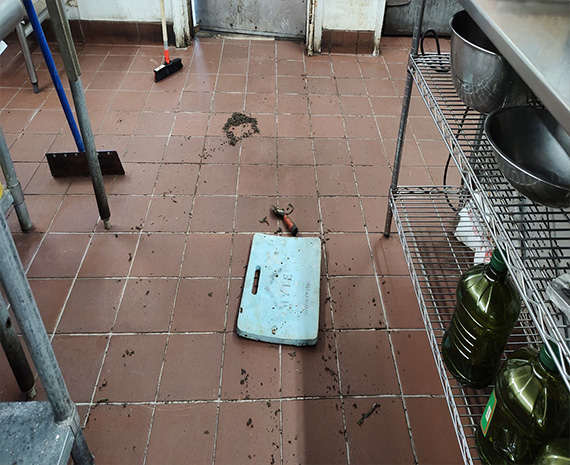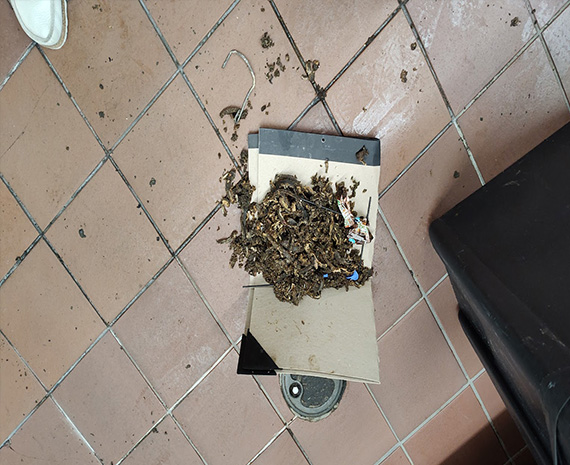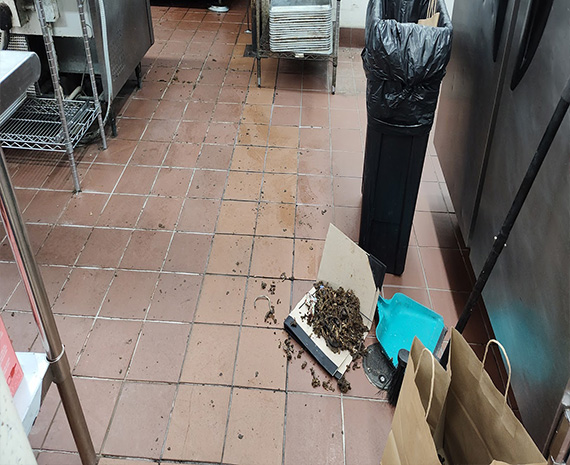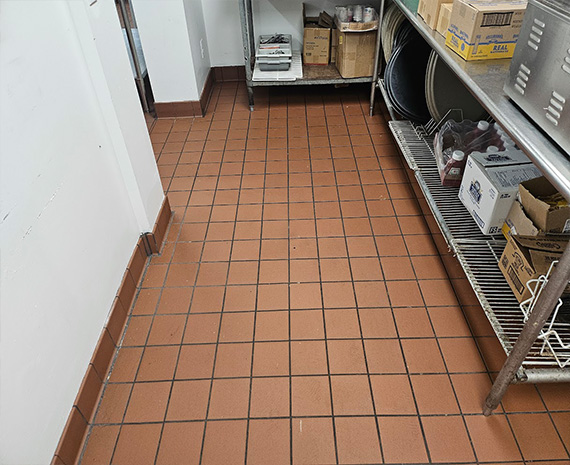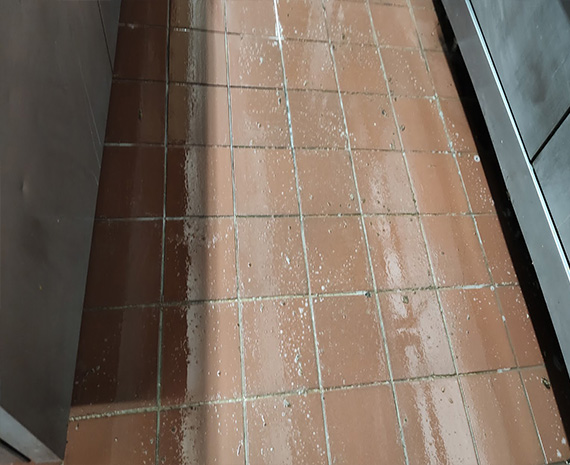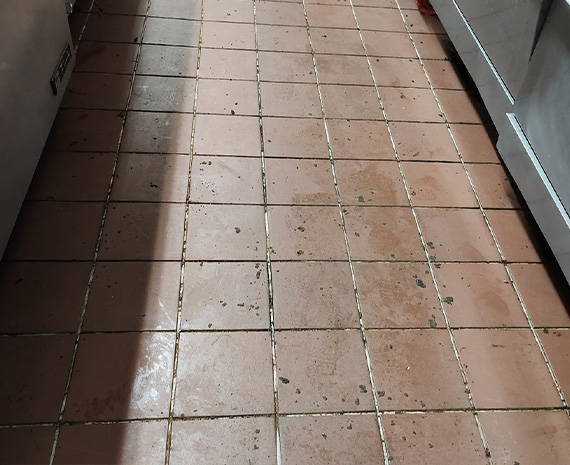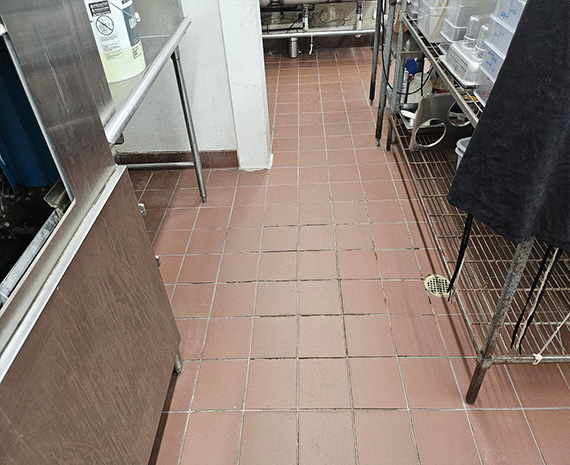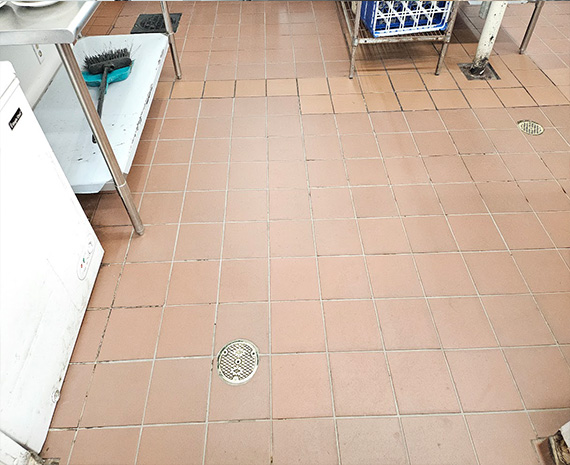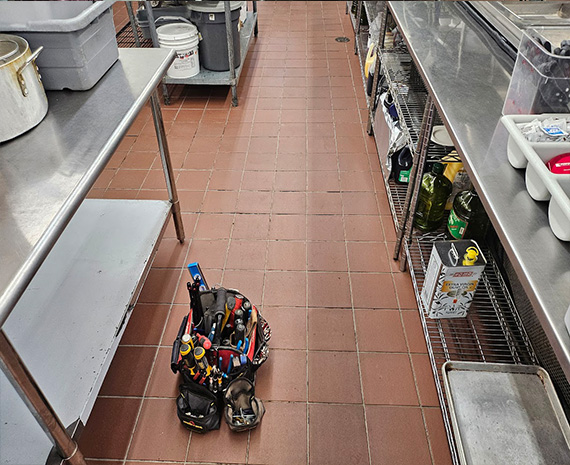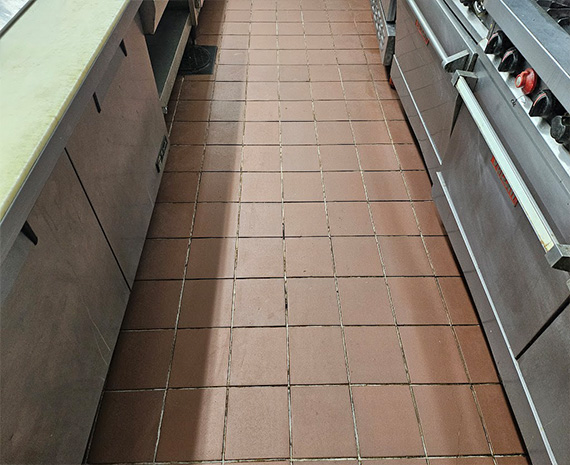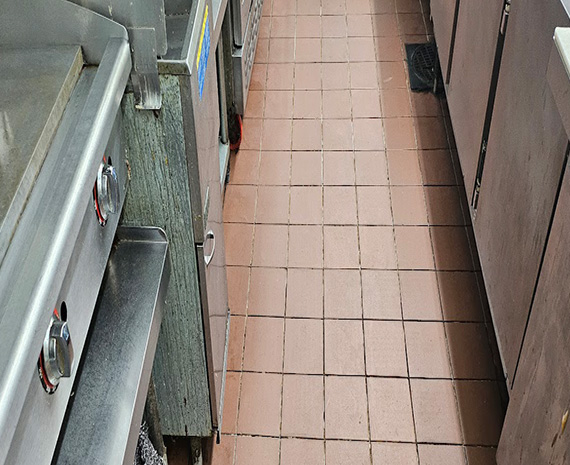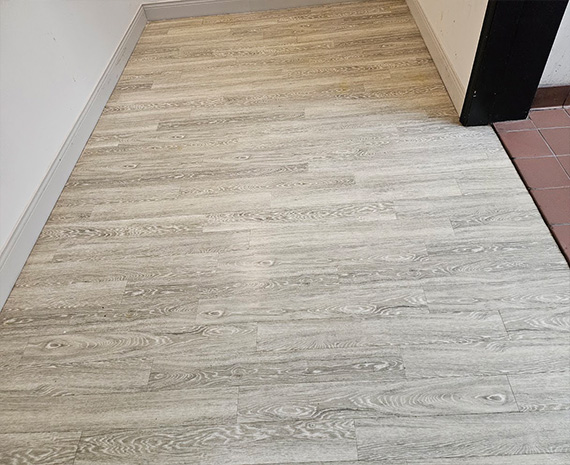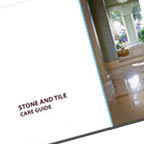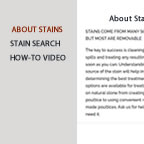Tackling a Kitchen Floor Grease Problem Head-On
- Home Case Studies Tackling a Kitchen Floor Grease Problem Head-On
- Location So Jersey Area
-
Job:
Club House Kitchen Floor
What begins as routine and proactive cleaning becomes disaster control
Back again for deep cleaning during a clubhouse shut down. Just LVP and tile this time as the carpet’s getting replaced.
The new carpet was due in Jan 13th, being installed in the dining room, bar and banquet area. So as a proactive measure we suggested to steam the kitchen floor to remove the grease film we noticed. It would help keep the new carpet clean.
The green light
We added the kitchen to our task list and we cleaned Jan 2nd. The cleaning was timed perfectly, before the install Jan 13th.
In the professional world of floor care it’s well known that cross contamination from one surface to another is common. You see it with mats in large office buildings. Another example is the use of fans when you enter a grocery store when it rains. But it’s especially needed but hardly implemented in food establishments.
Why cross contamination plans matter in food related businesses
In these facilities cooking activity cross contaminates easily. Other surfaces become infected from air borne smoke and fats, and foot traffic from the kitchen. So containment and removal is essential. Therefore, without intervention, the grease travels from the kitchen to other surfaces. At risk are fuzzy absorbent ones. And carpet is particularly vulnerable. Add to that heavy mopping degreaser residues, and eventually the mess on the floor is spinning out of control, with no relief in sight!
Case in point
Be your own detective while dining out– put on your ‘test shoes.’ While dining or in a fast food entity pay attention to the floor surface and listen to your shoes. Cross contamination from the kitchen and heavy degreaser residues become so built up you can hear the soles of your shoes sticking and clicking, making noise while you walk.
I hear it all the time. In fact, at one place while attending weekly meetings it was so bad I mentioned it to my server. Everywhere I went you could hear my shoes sticking, especially near the open kitchen and in the bathrooms. It was rampant! She agreed, and said her shoes stunk so bad her family insisted they not be brought into their house.
The work
Starting with the hard surfaces we got them done first. Easy-peasy, and night and day results for the LVP outside the kitchen. Next we focused on the kitchen.
Upon starting we set realistic expectations with the GM (General Manager). We pointed out that while improvement was guaranteed, reversing decades of buildup in one cleaning was unlikely.
Our proven process:
- Applying a heavy enzymatic degreaser formulated for organic grease.
- Using a rotary scrubber to break down oils from tiles and grout.
- Pressure washed under equipment and cook line tables.
- Hand scraped edges and corners to remove stubborn ‘goo.’
- Deployed our signature steam rinsing wand and edge tools to lift grease from the surface.
First results
The initial cleaning seemed mediocre. Not entirely pleased we doubled back over the floor. Again, something was off. It wasn’t the technology, but some tweaking was needed. There seemed to still be a greasy film left on the tile. Next we did a test area using a strong cleaner we have dubbed napalm (not really). Actually its a high-pH cleaner for heavier buildup. The floor improved, but the grease film remained. This prompted further investigation.
Meanwhile the Ass’t GM noticed lingering grease footprints. Knowing that ‘won’t fly’ she commented key Board Members wouldn’t be happy with the current result. In mutual agreement we needed to get to the bottom of the issue and find the film source.
The hidden culprit
Chris, our lead technician uncovered the root problem—not grout, it was years of grease embedded in deteriorated and missing grout joints. What looked like grout was not. Instead it was soft, spongy pliable filler, dark on top that mimicked grout. But prodding it and looking at it closely, it was not— it was grease.
Chris manually scraped the grout lines with a grout saw and extracted harden grease. It came out in chunks similar to medium sized french-fry pieces. As Chris removed more grease chunks it became clear removal was required. This explained why we didn’t “get ahead” of the grease.
Each rinse solubilized the fat into liquid. The grease in turn floated across the wet floor left by the steam wand (just a subtle amount, but enough). So while we made a dent in cleaning the floor, our efforts were also spreading a new grease film back on it. Beyond cleaning, it had become a full intervention project.
The Solution
Chris next directed the team to bring in specialized scrapers. (These tools are used in our stone restoration and floor stripping work.) Marvin used a multi-tool, Jeff deployed the sharp edge of a tile lifter. And Chris continued with a grout saw. Mark followed behind the team, sweeping and vacuuming the debris (barely keeping up, there was so much grease debris).
The bits and pieces were everywhere. It was hard to avoid them. So as anyone walked in that area they smashed the globs of goo down like pancakes. Frankly it was a chase your tail effort to remove the refuse and get ahead of the problem!
–This wasn’t routine cleaning—
It became an intensive effort to remove the grout imposter, aka the camouflaged grease build up. Therefore, this never would have been discovered without a trained eye, or without the technology at work. Only after determining the grease was built up in the grout voids was there an end in sight. It now became evident the floor needed re-grouting to stop the problem. Otherwise it would be rinse and repeat!
A Meeting of the Minds
We reconvened with the the Assistant GM to reveal our findings. We explained to her exactly what the problem was. And despite extreme steam cleanings, or any cleaning, the hidden grease issue had and would persist if it wasn’t removed.
She was thrilled our detective work would avoid a red herring! In fact she called the discovery brilliant! Furthermore, she noted how a massive difference there was having professionals involved. And although this exceeded the routine that was our agreement, we’d ride it out and get the results we both were looking for.
Furthermore she now questioned their in-house efforts made twice yearly to clean the kitchen. No longer acceptable, she began understanding it’s a better move to bring professionals in with this technology for results that actually work.
Repairs Are Now Required
To stop the bleeding re-grouting is required. And a dark epoxy, or a hybrid epoxy blend is sternly recommended. These grout types are a more resilient, non-absorbent option. And they are the norm for demanding environments like theirs.
The Outcome
By identifying and addressing the root cause, we helped prevent premature carpet damage. Therefore it would look better, and they wouldn’t lose their investment as fast as they were inevitably going to had the grease remained!
Now with our work complete we could hand off the grout repair to a contractor with close ties to the club. So still with a month to work with they confirmed this will be done.
Final Thoughts
Effective floor maintenance requires more than surface cleaning—it demands a comprehensive plan to manage contaminants across all areas. And for the work done on their behalf, by trained professionals, their carpets were saved before they were even installed!
Recognizing they avoided a disaster, we have now secured with them a twice-yearly kitchen cleaning contract. Slowing and interrupting the eventual grease and film contamination will ensure better carpet appearance and longevity.
In-house staff and even most cleaning services are not the answer for complex problems such as this. They lack the tools, the equipment, the training and the experience. This is exactly what sets us apart and why we have the reputation, the reviews, a Five Star Google rating and a long list of happy clients!
Join this Club House and a growing list of restaurants, franchise eatery’s, and fast food establishments. For questions answered and to discuss your project call us at 609.953.0472. Or Contact Us online!


